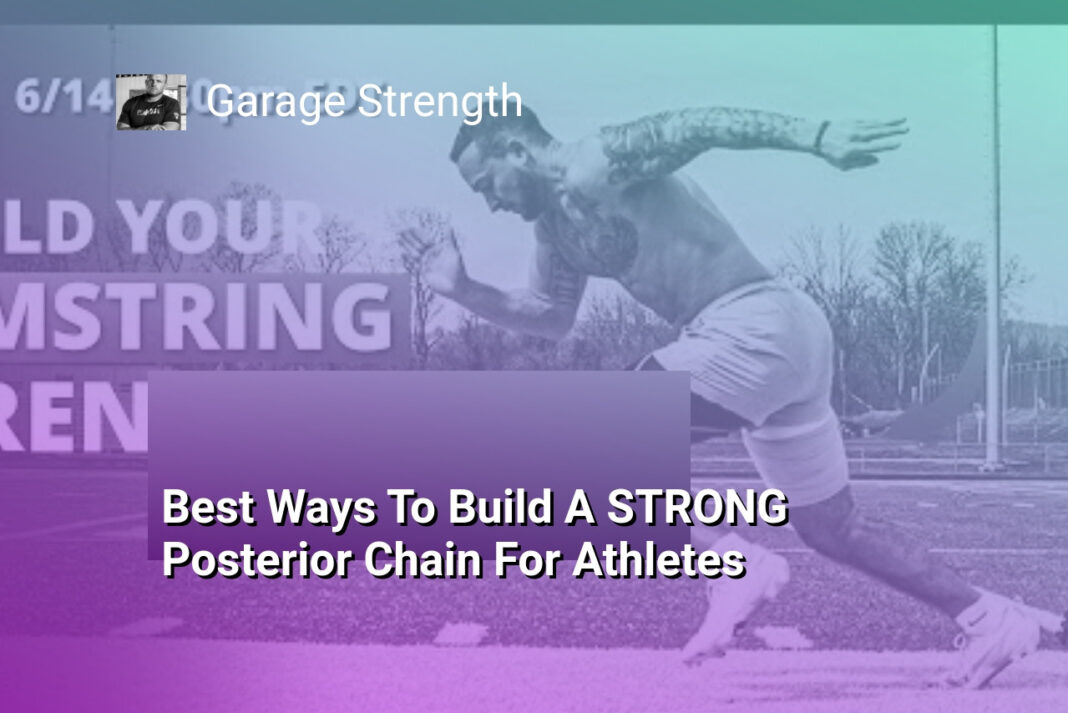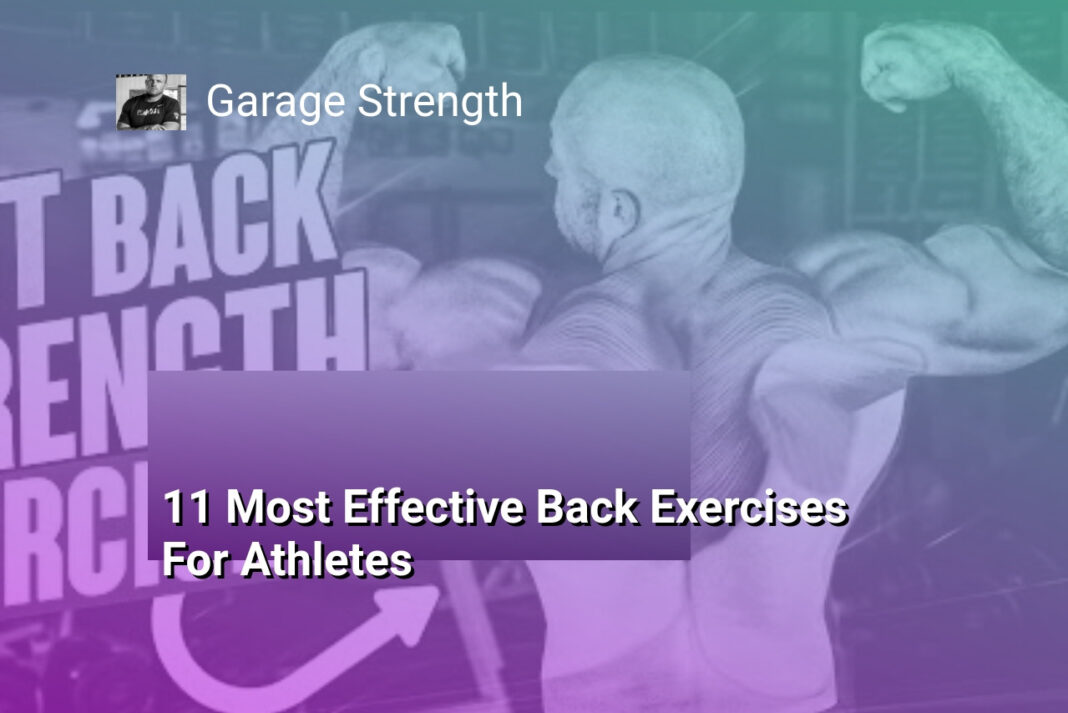The Bottom Line:
Here is a summary in the requested format:
- The posterior chain refers to the muscles at the back of the body, including the glutes, hamstrings, lower back, and calves, which are crucial for athletic performance.
- Strengthening the posterior chain can improve single-leg squats, back squats, and other compound exercises, leading to better locomotion, explosiveness, and overall strength.
- The specific exercises and loads required for posterior chain development depend on the athlete’s sport and position, with shot putters, wrestlers, and distance runners having different needs.
- Exercises like single-leg squats, RDLs, and back extensions can effectively target and strengthen the posterior chain muscles.
- Proper posterior chain development is essential for athletes, as it can enhance their speed, power, and overall athletic abilities.
Understanding the Posterior Chain
The Importance of the Posterior Chain
The posterior chain, comprising the glutes, hamstrings, and lower back muscles, is a crucial component of athletic performance. These muscle groups work together to power various movements, from hip extension and knee flexion to pelvic stabilization and lateral movement. Understanding the specific roles and functions of the posterior chain is essential for developing a comprehensive training program that optimizes athletic abilities.
Assessing Posterior Chain Strength
Evaluating an athlete’s posterior chain strength can provide valuable insights into their overall physical capabilities. Exercises like the single-leg squat, high-bar back squat, and Romanian deadlift (RDL) can be used to assess the strength and coordination of the glutes, hamstrings, and lower back. Identifying weaknesses in these areas can help guide targeted training interventions to address any deficiencies.
Tailoring Posterior Chain Training to Sport-Specific Demands
The specific needs of the posterior chain can vary significantly depending on the sport and the athlete’s position or event. For example, a shot putter may require a greater emphasis on maximal strength and power development, while a long-distance runner may benefit more from endurance-focused training. By considering the unique demands of the athlete’s sport, coaches can design posterior chain training programs that optimize performance and reduce the risk of injury.
In the case of a shot putter or an offensive lineman, the focus may be on developing high levels of maximal strength and power to generate explosive movements. On the other hand, a long-distance runner or a triathlete may require a greater emphasis on endurance and the ability to maintain proper form and mechanics over extended periods of time.
By understanding the specific demands of the sport and the athlete’s position, coaches can tailor their posterior chain training strategies to ensure that the athlete’s development is aligned with their performance goals.
Key Muscle Groups and Their Functions
Exploring the Glutes and Hamstrings: Powerhouses of the Posterior Chain
The posterior chain, comprising the glutes, hamstrings, and lower back, is a critical component of athletic performance. These muscle groups work in synergy to generate power, provide stability, and facilitate efficient movement patterns. Understanding the specific functions of each muscle group within the posterior chain is essential for developing a comprehensive training program.
The Glutes: Driving Force for Hip Extension and Pelvic Stability
The glutes, including the gluteus maximus, medius, and minimus, play a pivotal role in hip extension, which is crucial for activities such as sprinting, jumping, and explosive movements. These muscles are responsible for generating the necessary force to propel the body forward and upward. Additionally, the glutes contribute to pelvic stability, which is essential for maintaining proper posture and spinal alignment during dynamic movements.
The Hamstrings: Versatile Muscle Group for Knee Flexion and Hip Extension
The hamstring muscle group, consisting of the biceps femoris, semitendinosus, and semimembranosus, is responsible for knee flexion and hip extension. These functions are vital for activities like running, jumping, and changing direction. The hamstrings also work in tandem with the glutes to stabilize the pelvis and control the movement of the lower limbs.
By understanding the specific roles and functions of the glutes and hamstrings, athletes and coaches can develop targeted training programs that address the unique demands of their sport. This knowledge can inform the selection of exercises, the progression of training loads, and the implementation of injury prevention strategies, all of which contribute to the development of a powerful and resilient posterior chain.
Assessing Posterior Chain Strength and Weaknesses
Assessing Posterior Chain Strength and Weaknesses
When it comes to building a powerful posterior chain for athletic performance, it’s crucial to assess an individual’s strengths and weaknesses in this area. The posterior chain encompasses a range of muscles, including the glutes, hamstrings, lower back, and to some extent, the calves and soleus.
Evaluating Posterior Chain Functionality
To evaluate the posterior chain’s functionality, we can look at various movement patterns and exercises. The single-leg squat is a valuable assessment tool, as it can reveal imbalances or weaknesses in the glutes, hamstrings, and lower back stability. If an athlete struggles with a full-range, bodyweight single-leg squat, it’s a clear indication that their posterior chain needs targeted attention.
Sport-Specific Considerations
The specific demands of the sport or athletic event also play a significant role in determining the necessary posterior chain strength and development. For example, a shot putter or offensive lineman will require a different level of posterior chain strength compared to a long-distance runner or swimmer. By understanding the sport-specific requirements, we can tailor the posterior chain training to meet the athlete’s needs.
When assessing posterior chain strength, we need to consider the range, pattern, and load that the athlete can handle. A wrestler, for instance, may have different posterior chain strength requirements compared to a marathoner or triathlete. The load they can manage may be significantly higher, as the sport demands more explosive power and force production.
In contrast, endurance athletes may only need to demonstrate posterior chain strength sufficient to maintain proper running or swimming mechanics, with a lower overall load requirement. By analyzing the sport-specific demands, we can identify the appropriate targets for posterior chain development and ensure the athlete is prepared for the physical challenges of their sport.
Ultimately, the goal is to create a comprehensive assessment of the athlete’s posterior chain capabilities, identify areas of weakness or imbalance, and then design a targeted training program to address those needs. This holistic approach to posterior chain development can significantly enhance an athlete’s overall performance and reduce the risk of injury.
Sport-Specific Posterior Chain Training
Targeted Exercises for Sport-Specific Posterior Chain Development
When it comes to building a powerful posterior chain for athletic performance, a one-size-fits-all approach simply doesn’t cut it. The specific demands and movement patterns of each sport require a tailored training approach to effectively target and strengthen the key muscle groups involved.
Maximizing Strength and Power for Power-Focused Sports
For athletes in power-centric sports like shot put, wrestling, or offensive line, the focus should be on developing maximal strength and power in the posterior chain. Exercises like heavy back squats, deadlifts, and Romanian deadlifts (RDLs) can help build the raw strength needed to generate explosive force from the hips and legs. Single-leg variations of these lifts, such as the single-leg squat and single-leg RDL, are also crucial for addressing any imbalances and improving unilateral strength.
Enhancing Endurance and Efficiency for Endurance Sports
For endurance-based athletes like distance runners and swimmers, the posterior chain training emphasis shifts more towards building muscular endurance and movement efficiency. While maximal strength is still important, the focus should be on exercises that improve hip extension, glute activation, and hamstring flexibility. Exercises like step-ups, glute bridges, and hamstring curls can help develop the stamina and coordination needed for sustained, economical movement patterns.
Regardless of the sport, the key is to identify the specific movement demands and then design a posterior chain training program that addresses those needs. By taking a sport-specific approach, athletes can maximize the carryover to their on-field or in-water performance, leading to improved speed, power, and overall athletic ability.
Integrating Single-Leg Exercises for Optimal Results
Leveraging Single-Leg Exercises for Enhanced Posterior Chain Strength
Integrating single-leg exercises into your training regimen is a powerful strategy for optimizing posterior chain performance. These unilateral movements not only target the glutes, hamstrings, and lower back muscles individually, but they also challenge core stability and balance, which are crucial for athletic success.
Mastering the Single-Leg Squat
The single-leg squat is a prime example of a single-leg exercise that can significantly enhance posterior chain strength. This movement requires the athlete to maintain proper form and control throughout the range of motion, engaging the glutes and hamstrings to drive the movement. By starting with bodyweight and gradually increasing the load, athletes can build the necessary strength and stability to excel in their respective sports.
Incorporating Eccentric-Focused Exercises
In addition to the single-leg squat, incorporating eccentric-focused exercises, such as the Nordic hamstring curl or single-leg Romanian deadlift, can be highly beneficial for posterior chain development. These movements emphasize the lengthening, or eccentric, phase of the exercise, which can lead to increased muscle fiber recruitment and improved injury resilience.
By mastering these single-leg and eccentric-based exercises, athletes can unlock the true potential of their posterior chain, leading to enhanced athletic performance, improved injury prevention, and a more balanced and powerful movement pattern.





